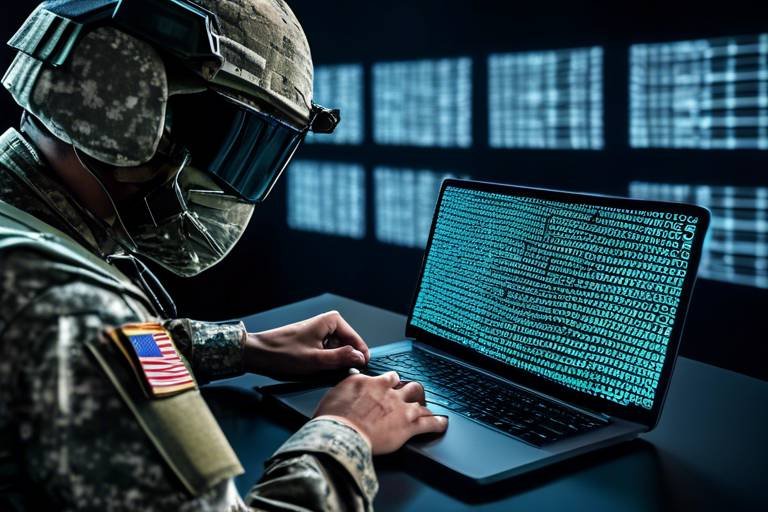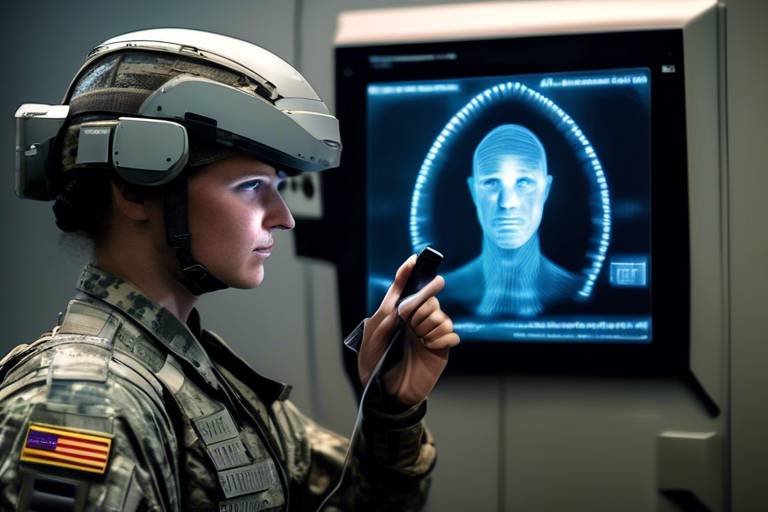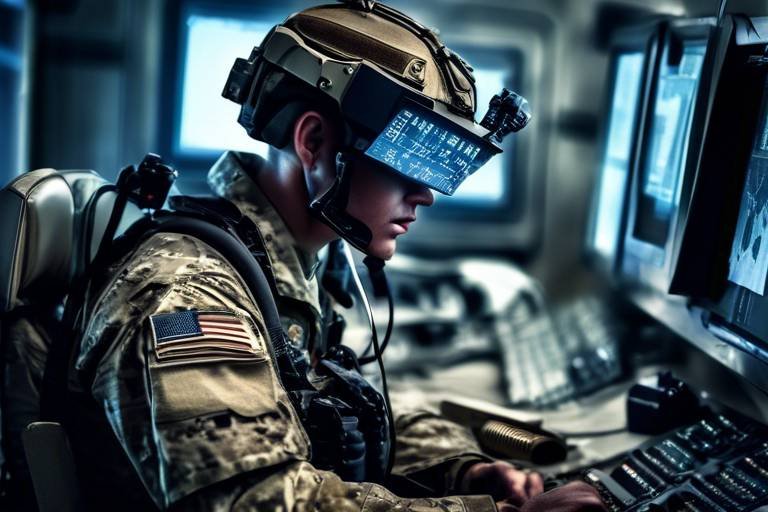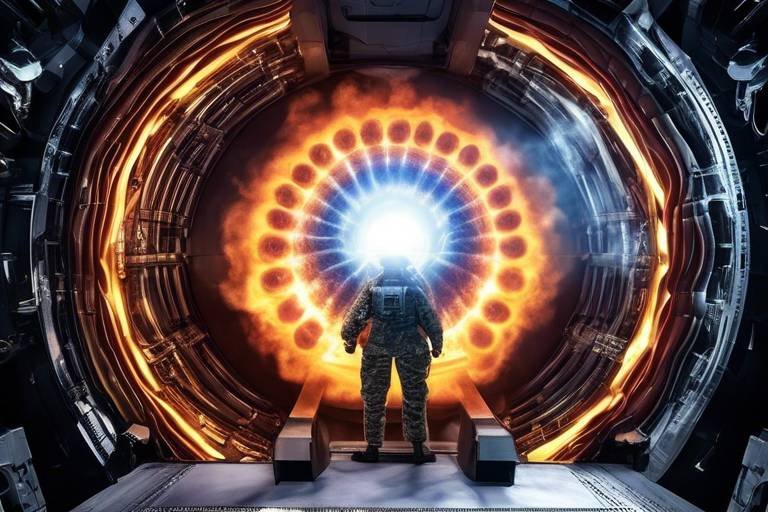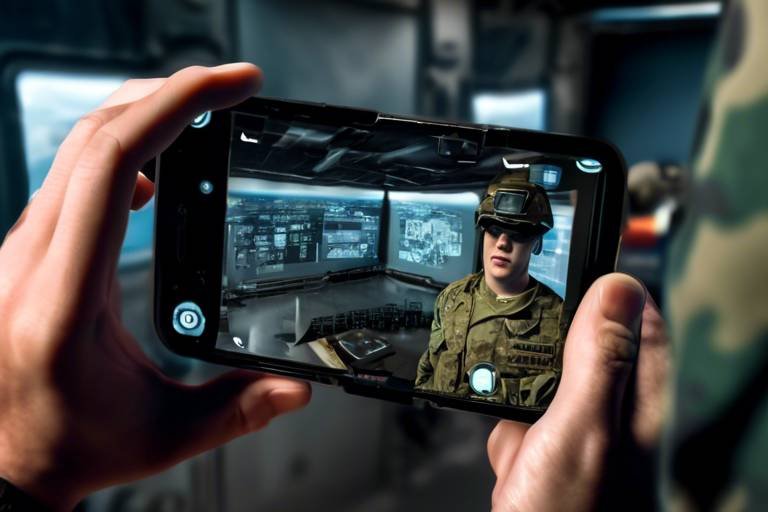How AI is Revolutionizing Battlefield Tactics
In an era where technology is advancing at an unprecedented pace, the battlefield is no exception. The integration of artificial intelligence (AI) into military strategies is not just a trend; it’s a revolution that is reshaping how wars are fought. Imagine a world where decisions are made in a split second, where soldiers have access to real-time data that enhances their situational awareness, and where the risks to human life are significantly minimized. This is not a scene from a sci-fi movie; this is the reality of modern warfare. As we delve deeper into this topic, we will explore how AI is enhancing strategic planning, improving surveillance, and transforming training methods, all while raising important ethical questions about its use.
Artificial intelligence enhances strategic planning by analyzing vast data sets, enabling military leaders to make informed decisions quickly and accurately. This capability is crucial in today's fast-paced combat scenarios where every second counts. By leveraging machine learning algorithms, military strategists can predict outcomes and optimize resources, leading to more effective operational outcomes. For instance, AI can process information from various sources—intelligence reports, satellite imagery, and even social media—to provide a comprehensive view of the battlefield. As a result, commanders are equipped with insights that were previously unattainable, allowing them to stay one step ahead of their adversaries.
AI technologies improve surveillance capabilities by allowing for real-time data analysis and threat detection. Imagine drones flying over enemy territory, equipped with AI that can instantly analyze the terrain and identify potential threats. This significantly enhances reconnaissance missions and situational awareness on the battlefield. With AI, military units can receive updates on enemy movements almost instantaneously, enabling them to adjust their tactics on the fly. The ability to gather and analyze data in real-time is a game-changer, providing a tactical advantage that can determine the outcome of engagements.
The integration of AI in drone technology has revolutionized aerial reconnaissance. Drones are no longer just remote-controlled machines; they are becoming autonomous entities that can carry out complex missions with minimal human intervention. This advancement not only enhances intelligence gathering but also reduces risks to human operators. With drones capable of operating in hostile environments, military forces can gather crucial information without putting lives on the line.
Autonomous drones equipped with AI can conduct missions without human intervention. This capability allows for faster responses to emerging threats and more efficient resource allocation. For example, if a drone detects an enemy formation, it can immediately assess the situation and decide whether to engage or retreat, all while relaying critical information back to command centers. This level of automation is not just about efficiency; it’s about saving lives.
AI-driven systems can identify and classify targets with high precision. This improvement in target recognition enhances the accuracy of drone strikes and minimizes collateral damage during military operations. By utilizing advanced algorithms, these systems can differentiate between combatants and civilians, significantly reducing the risk of unintended casualties. In a world where public perception can sway the course of military action, this capability is invaluable.
Predictive analytics powered by AI helps military strategists anticipate enemy movements. By analyzing historical data and current battlefield conditions, AI can provide insights that enable proactive measures. This foresight can shift the balance of power in conflict scenarios, allowing military forces to outmaneuver their opponents effectively. The ability to predict enemy actions is akin to having a chess master’s foresight, enabling military leaders to stay several steps ahead.
Military training programs are increasingly utilizing AI-driven simulations to create realistic combat scenarios. These simulations help soldiers prepare for a variety of situations, improving decision-making skills under pressure. Imagine a soldier training in a virtual environment that mimics the chaos of real combat. This level of realism helps build confidence and competence, ensuring that when soldiers are deployed, they are ready for anything.
AI-enhanced virtual reality training offers immersive experiences that replicate battlefield conditions. This technology allows soldiers to practice maneuvers and strategies in a safe and controlled environment. The sensory feedback from VR training can be so realistic that it prepares soldiers for the adrenaline rush of actual combat, making them more effective when it counts.
Adaptive learning systems utilize AI to personalize training programs based on individual performance. This means that if a soldier struggles with a specific skill, the training program adjusts to provide more focused instruction. This tailored approach ensures that soldiers receive the targeted training they need to enhance their skills effectively, leading to a more competent and prepared military force.
The rise of AI in military applications raises significant ethical questions regarding accountability, decision-making, and the potential for autonomous weapon systems to operate without human oversight. As we embrace these technologies, we must also confront the moral implications of their use.
The debate surrounding autonomous weapons focuses on the moral implications of machines making life-and-death decisions. Should we allow machines to determine who lives and who dies? This question highlights the need for regulations and ethical guidelines in AI development. As military technology advances, so too must our frameworks for accountability and oversight.
Determining accountability for decisions made by AI systems in combat scenarios poses challenges. Who is responsible when an autonomous drone makes a mistake? This necessitates clear frameworks to address responsibility and liability in warfare. As we move forward, establishing these guidelines will be crucial to ensure that technology serves humanity, rather than the other way around.
Looking ahead, the evolution of AI technology will shape future battlefield tactics. The integration of innovative solutions in military operations is essential for maintaining an edge in combat. As AI continues to advance, we can expect to see:
Future warfare may see the emergence of collaborative AI systems that work alongside human operators. This partnership will enhance decision-making processes and operational effectiveness in complex combat environments. Imagine a battlefield where AI assists commanders in real-time, analyzing situations and suggesting optimal strategies.
The convergence of AI and cyber warfare strategies will redefine how military forces protect their infrastructure and counteract cyber threats. As digital warfare becomes more prevalent, AI will play a critical role in defending against attacks and ensuring the security of military operations.
- What is the role of AI in modern warfare? AI enhances decision-making, improves reconnaissance, and transforms training methods in military operations.
- How does AI improve surveillance capabilities? AI allows for real-time data analysis and threat detection, significantly enhancing situational awareness.
- What are the ethical concerns surrounding AI in warfare? Key concerns include accountability for AI decisions and the moral implications of autonomous weapons.
- How is AI changing military training? AI-driven simulations and adaptive learning systems personalize training, making soldiers more prepared for real combat.
- What future trends should we expect in AI warfare? Collaborative AI systems and integration with cyber warfare are likely to shape the future of military tactics.
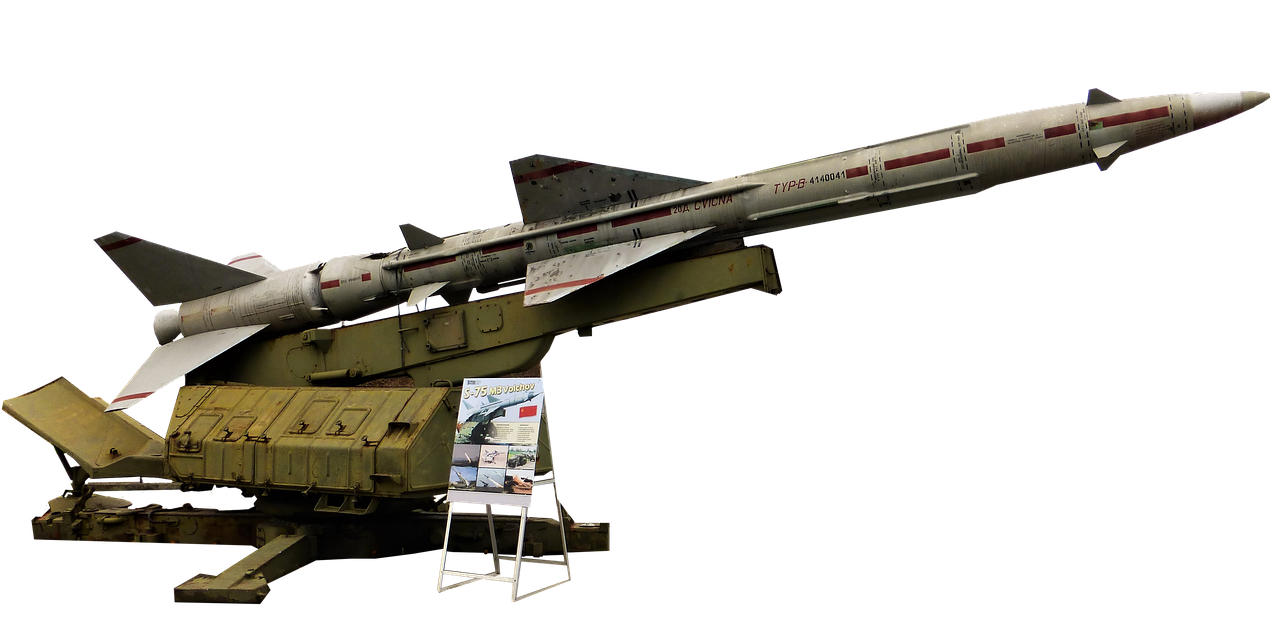
AI in Strategic Planning
Artificial intelligence is not just a buzzword; it’s a game-changer in the realm of military strategic planning. Imagine having the ability to analyze vast data sets at lightning speed, transforming complex information into actionable insights. This is precisely what AI brings to the table. By leveraging advanced algorithms and machine learning techniques, military leaders can now make informed decisions quickly and accurately, which is crucial in high-stakes environments where every second counts.
One of the most significant advantages of AI in strategic planning is its capacity to process and analyze data from multiple sources. For instance, data can come from satellite imagery, intelligence reports, social media, and even historical battle outcomes. The integration of these diverse data streams allows for a comprehensive overview of the battlefield, enabling commanders to identify patterns, predict enemy movements, and devise strategies that are not only effective but also adaptable to changing circumstances.
Furthermore, AI can enhance operational outcomes by recommending optimal courses of action based on real-time data. This capability is akin to having a highly skilled advisor who can sift through mountains of information and highlight the most relevant points. For example, AI systems can evaluate various scenarios and suggest the best tactical approaches, taking into account factors such as troop morale, weather conditions, and logistical constraints. This level of analysis would be virtually impossible for humans to achieve in such a short timeframe.
Additionally, AI can help in resource allocation, ensuring that troops are deployed where they are needed most. By utilizing predictive analytics, military leaders can foresee potential hotspots of conflict and allocate resources accordingly, thus maximizing operational efficiency. This proactive approach not only saves time and money but also enhances the overall effectiveness of military operations.
To illustrate the impact of AI in strategic planning, consider the following table that outlines key benefits:
| Benefit | Description |
|---|---|
| Speed | AI processes data in real-time, allowing for rapid decision-making. |
| Accuracy | Advanced algorithms minimize human error, leading to more precise outcomes. |
| Resource Optimization | AI helps allocate resources efficiently, ensuring troops are deployed effectively. |
| Scenario Analysis | AI evaluates multiple scenarios to suggest the best tactical approaches. |
In conclusion, the integration of AI into military strategic planning is not just a trend; it’s a necessity in today’s technology-driven landscape. As we continue to face complex global challenges, the importance of data-driven decision-making will only grow. Military leaders who embrace these innovations will undoubtedly have a significant advantage on the battlefield.
- How does AI improve decision-making in military operations?
AI enhances decision-making by providing fast, accurate analyses of vast amounts of data, allowing military leaders to make informed choices quickly. - What are the ethical concerns surrounding AI in warfare?
Concerns include accountability for decisions made by AI systems, the potential for autonomous weapons to operate without human oversight, and the moral implications of machines making life-and-death choices. - Will AI replace human decision-makers in the military?
While AI can assist in decision-making, it is unlikely to fully replace human judgment, especially in complex and nuanced situations.
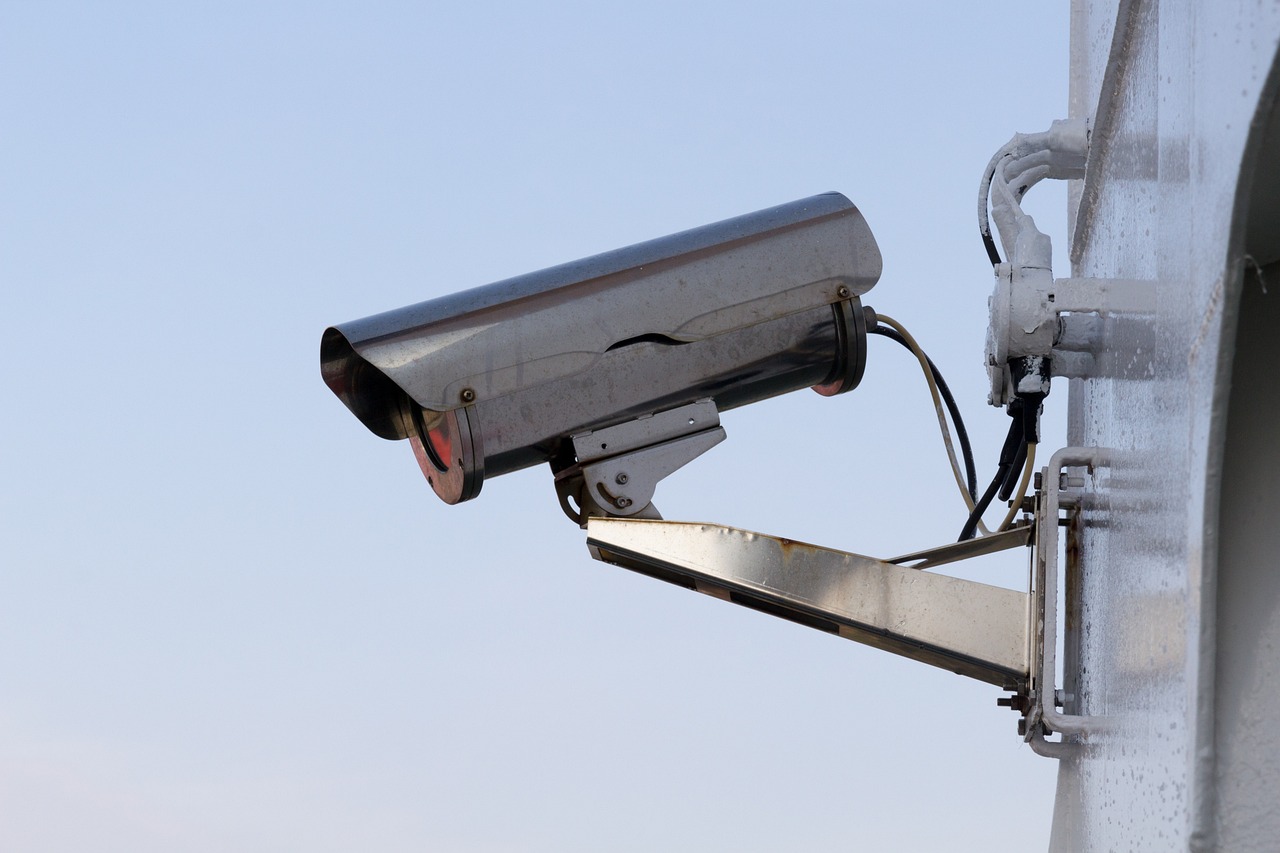
Enhanced Surveillance and Reconnaissance
In the fast-paced world of modern warfare, the need for timely and accurate information has never been more critical. Artificial Intelligence (AI) is stepping up to the plate, transforming traditional surveillance and reconnaissance methods into something truly revolutionary. Imagine having the ability to analyze mountains of data in real-time, identifying potential threats before they become a reality. This is the power of AI in surveillance, and it’s changing the game on the battlefield.
With AI technologies, military forces can now enhance their surveillance capabilities significantly. These systems can process vast amounts of data from various sources, including satellites, drones, and ground sensors, allowing for a comprehensive view of the battlefield. The result? Unprecedented situational awareness that enables commanders to make informed decisions quickly and effectively. For instance, AI algorithms can filter through video feeds, pinpointing movements that may indicate enemy activity, thus streamlining the reconnaissance process.
One of the standout features of AI in this domain is its ability to perform real-time data analysis. Instead of relying solely on human operators to monitor feeds and identify threats, AI can autonomously detect anomalies and alert personnel to potential dangers. This capability not only speeds up the response time but also significantly reduces the risk to human life. Imagine a scenario where a drone equipped with AI technology can identify an enemy position and relay that information back to command in seconds, allowing for immediate tactical adjustments.
Speaking of drones, the integration of AI into drone technology has been nothing short of groundbreaking. These unmanned aerial vehicles (UAVs) are now capable of conducting missions with a level of autonomy that was previously unimaginable. This advancement is crucial in enhancing intelligence gathering while minimizing the risks associated with human operators.
Autonomous drones can navigate complex environments and carry out surveillance missions without direct human control. This capability allows for faster responses to emerging threats, as these drones can operate continuously, gathering data and relaying it back to command centers. The efficiency of resource allocation is also improved, as military forces can deploy these drones to monitor multiple locations simultaneously, ensuring that no potential threat goes unnoticed.
Furthermore, AI-driven systems are revolutionizing target recognition. These systems can analyze images and video feeds, identifying and classifying targets with remarkable precision. This not only improves the accuracy of drone strikes but also minimizes collateral damage during military operations. For example, AI can differentiate between combatants and civilians in crowded environments, significantly reducing the risk of unintended casualties. The implications of this technology are profound, as it enhances operational effectiveness while adhering to ethical standards in warfare.
In summary, the integration of AI in surveillance and reconnaissance is reshaping how military forces operate on the battlefield. With enhanced data analysis capabilities, autonomous drones, and AI-driven target recognition, military leaders can make more informed decisions, respond to threats faster, and ultimately save lives. As we look to the future, it’s clear that AI will continue to play a pivotal role in revolutionizing military strategies.
- How does AI improve surveillance capabilities?
AI enhances surveillance by processing and analyzing vast amounts of data from various sources in real-time, allowing for quicker identification of potential threats. - What role do drones play in AI-driven reconnaissance?
Drones equipped with AI can operate autonomously, conduct surveillance missions, and relay critical information back to command centers without human intervention. - Can AI help reduce collateral damage in military operations?
Yes, AI-driven target recognition systems can identify and classify targets with high precision, minimizing the risk of unintended casualties during strikes.

Drone Technology Advancements
In the ever-evolving landscape of modern warfare, drone technology stands out as a pivotal advancement that has transformed military operations. The integration of artificial intelligence (AI) into drone systems has not only enhanced their capabilities but also redefined how military forces conduct reconnaissance and engage in combat. Imagine a world where drones can operate autonomously, making split-second decisions based on real-time data—this is not a far-off dream but a current reality.
One of the most significant breakthroughs in drone technology is the development of autonomous drones. These machines are equipped with sophisticated AI algorithms that allow them to navigate complex environments without human intervention. They can analyze their surroundings, identify potential threats, and execute missions with remarkable precision. This level of autonomy reduces the risk to human operators while also enabling faster responses to emerging threats on the battlefield.
Moreover, AI-driven target recognition has revolutionized the way drones engage with enemy forces. Traditional methods relied heavily on human operators to identify targets, which often led to delays and increased risk of collateral damage. However, with AI, drones can now process vast amounts of visual data in real-time, identifying and classifying targets with high accuracy. This advancement not only improves the effectiveness of drone strikes but also significantly minimizes the unintended consequences of military operations.
To illustrate the impact of these advancements, consider the following table that compares traditional drone capabilities with AI-enhanced systems:
| Feature | Traditional Drones | AI-Enhanced Drones |
|---|---|---|
| Autonomy | Requires constant human control | Operates independently with real-time decision-making |
| Target Recognition | Relies on human identification | Utilizes AI algorithms for high-precision target classification |
| Response Time | Slower due to human input | Instantaneous reactions to threats |
| Data Processing | Limited by human analysis | Processes vast data sets in real-time |
As we look to the future, the potential of AI in drone technology is boundless. The ongoing research and development in this field promise even more sophisticated systems capable of performing complex missions that were previously unimaginable. The combination of AI and drone technology not only enhances military capabilities but also raises important questions about the ethical implications of using such powerful tools in warfare.
- What are autonomous drones? Autonomous drones are unmanned aerial vehicles that can operate without direct human control, using AI to make decisions based on their environment.
- How does AI improve target recognition in drones? AI enhances target recognition by analyzing and classifying targets using advanced algorithms, which increases accuracy and reduces collateral damage.
- What are the benefits of using AI in drone technology? The benefits include faster response times, increased operational efficiency, reduced risk to human operators, and improved accuracy in military engagements.

Autonomous Drones
The emergence of marks a pivotal shift in modern warfare, ushering in an era where machines can operate independently in hostile environments. These drones are not just remote-controlled flying machines; they are equipped with advanced artificial intelligence that enables them to make real-time decisions without human intervention. Imagine a soldier in the field who can rely on a fleet of drones to carry out reconnaissance missions, deliver supplies, or even engage in combat—all while minimizing risk to human life. This capability is not only revolutionary but also a game-changer on the battlefield.
One of the most significant advantages of autonomous drones is their ability to respond to threats much faster than human operators. In high-pressure situations where every second counts, these drones can analyze data, assess threats, and execute missions with incredible speed and precision. For instance, if an enemy combatant is detected, an autonomous drone can quickly decide the best course of action—whether to provide surveillance, launch a defensive strike, or relay the information back to command for further instructions. This level of responsiveness can dramatically alter the dynamics of a conflict.
Moreover, the deployment of autonomous drones allows for more effective resource allocation. Military forces can deploy these drones in areas that are too dangerous for human soldiers, thereby preserving their safety while still maintaining operational effectiveness. This not only enhances mission success rates but also optimizes the overall strategy by allowing human personnel to focus on more complex tasks that require critical thinking and emotional intelligence.
However, the rise of autonomous drones does not come without its challenges. There are ongoing debates about the ethical implications of allowing machines to make life-and-death decisions. Questions arise about accountability—if an autonomous drone makes a mistake, who is responsible? Is it the programmer, the military, or the machine itself? These are critical issues that need to be addressed as we move forward in this new era of warfare.
To summarize, autonomous drones represent a significant leap in military technology, offering enhanced capabilities and operational efficiency. As we continue to explore the potential of these machines, it is essential to balance their advantages with the ethical considerations they bring to the forefront. The future of warfare may very well depend on how we navigate these complex issues surrounding autonomous systems.
- What are autonomous drones?
Autonomous drones are unmanned aerial vehicles (UAVs) equipped with artificial intelligence that allows them to operate without direct human control, making decisions in real-time during missions. - How do autonomous drones enhance military operations?
They improve operational efficiency by responding quickly to threats, conducting reconnaissance missions in dangerous areas, and allowing human soldiers to focus on more complex tasks. - What are the ethical concerns surrounding autonomous drones?
Ethical concerns include accountability for decisions made by drones, the potential for unintended harm, and the implications of machines making life-and-death choices without human oversight. - Can autonomous drones operate in all environments?
While autonomous drones are designed to function in various environments, their effectiveness can be influenced by factors such as weather conditions, terrain, and technological limitations. - How do military forces ensure the safe use of autonomous drones?
Military forces implement rigorous training, develop clear operational guidelines, and establish accountability frameworks to ensure the responsible use of autonomous drones in combat scenarios.

AI-Driven Target Recognition
In the rapidly evolving landscape of modern warfare, stands out as a game-changer. Imagine a battlefield where machines can accurately identify and classify targets in a fraction of the time it takes a human operator. This technology not only enhances the precision of military operations but also significantly reduces the risk of collateral damage. With the integration of advanced algorithms and machine learning, AI systems can analyze visual data from various sources, including drones and surveillance cameras, to make split-second decisions.
One of the key advantages of AI-driven target recognition is its ability to process vast amounts of data quickly. Traditional methods often rely on human operators who may suffer from fatigue or cognitive overload during intense operations. In contrast, AI systems can maintain high levels of performance, tirelessly scanning the environment for potential threats. This capability is crucial in scenarios where every second counts, allowing military forces to respond swiftly to emerging dangers.
Moreover, AI-driven systems utilize deep learning techniques to improve their accuracy over time. By analyzing past engagements and incorporating feedback, these systems can refine their algorithms to enhance target identification. For instance, if an AI system misidentifies a target, it can learn from that mistake and avoid similar errors in the future. This continuous learning process ensures that military operations become more efficient and effective with each deployment.
However, the implementation of AI-driven target recognition is not without its challenges. One major concern is the potential for false positives, where the system mistakenly identifies a non-threat as a target. This could lead to devastating consequences, including unintended casualties and damage to civilian infrastructure. Therefore, it is essential for military leaders to maintain a balance between relying on AI technology and ensuring human oversight in critical decision-making processes.
To illustrate the impact of AI-driven target recognition, consider the following table that compares traditional methods with AI-enhanced techniques:
| Aspect | Traditional Target Recognition | AI-Driven Target Recognition |
|---|---|---|
| Speed | Slower due to human processing time | Instantaneous analysis and identification |
| Accuracy | Subject to human error and fatigue | High precision with machine learning improvements |
| Data Processing | Limited by human capacity | Can analyze vast datasets simultaneously |
| Adaptability | Static methods, slow to adapt | Dynamic learning from past engagements |
As military operations become more complex and technology-driven, the importance of AI-driven target recognition cannot be overstated. It represents a significant leap forward in enhancing operational efficiency and effectiveness on the battlefield. However, as we embrace these advancements, it is crucial to address the ethical implications and ensure that human judgment remains a key component of military decision-making.
- What is AI-driven target recognition?
AI-driven target recognition refers to the use of artificial intelligence algorithms to identify and classify targets on the battlefield, improving accuracy and reducing response times. - How does AI improve target recognition accuracy?
AI systems utilize deep learning and machine learning techniques to analyze data from past engagements, allowing them to refine their algorithms and enhance precision over time. - What are the risks associated with AI-driven target recognition?
Potential risks include false positives, which can lead to unintended casualties and damage. Thus, maintaining human oversight in decision-making is essential. - Can AI systems operate independently in combat?
While AI systems can assist in target recognition, human oversight is crucial to ensure ethical decision-making and accountability in combat scenarios.

Predictive Analytics for Warfare
In the rapidly evolving landscape of modern warfare, predictive analytics powered by artificial intelligence (AI) is becoming a game-changer. Imagine having the ability to foresee enemy movements before they even occur—this is the promise of predictive analytics. By analyzing historical data, troop movements, and various external factors, military strategists can anticipate potential threats and respond proactively, rather than reactively. This shift from reaction to anticipation can significantly alter the dynamics of conflict, giving a critical edge to those who harness this technology effectively.
At its core, predictive analytics utilizes sophisticated algorithms and machine learning techniques to sift through mountains of data. This process can include everything from weather patterns to social media trends that might indicate unrest in specific regions. By leveraging these insights, military leaders can make informed decisions that enhance operational efficiency and effectiveness. For example, if a particular region shows signs of escalating tensions, military resources can be allocated preemptively to mitigate potential conflicts.
The application of predictive analytics is not limited to troop movements; it also extends to logistics, resource allocation, and even psychological operations. By predicting how enemy forces might react to certain actions, military planners can devise strategies that exploit weaknesses and create opportunities for success. This kind of strategic foresight can be likened to playing a game of chess, where anticipating your opponent's moves can lead to a decisive victory.
Furthermore, the integration of AI in predictive analytics allows for a continuous feedback loop. As new data comes in, the algorithms learn and adapt, refining their predictions over time. This adaptability is crucial in the fluid and unpredictable nature of warfare. The ability to adjust strategies based on real-time data can mean the difference between victory and defeat on the battlefield.
However, the use of predictive analytics in warfare is not without challenges. The accuracy of predictions heavily relies on the quality and comprehensiveness of the data being analyzed. Incomplete or biased data can lead to flawed conclusions, potentially resulting in disastrous military decisions. Therefore, it is vital for military organizations to ensure that their data collection methods are robust and transparent.
As we look to the future, the role of predictive analytics in warfare will only grow. With advancements in AI and machine learning, we can expect even more sophisticated models that can provide deeper insights and more accurate forecasts. The military of tomorrow will not just react to threats; it will anticipate them, allowing for a level of strategic planning that was once thought impossible. This capability will redefine how military operations are conducted and could serve as a deterrent against potential aggressors, knowing that their moves are being closely monitored and predicted.
In conclusion, predictive analytics is revolutionizing warfare by enabling military leaders to anticipate enemy actions, optimize resource allocation, and make data-driven decisions. As technology continues to advance, the integration of predictive analytics into military strategy will become increasingly essential, shaping the future of conflict in profound ways.
- What is predictive analytics in warfare?
Predictive analytics in warfare refers to the use of AI and data analysis to forecast enemy movements and potential threats, allowing for proactive military strategies. - How does AI improve predictive analytics?
AI enhances predictive analytics by processing large volumes of data quickly and accurately, identifying patterns and trends that human analysts might miss. - What are the challenges of using predictive analytics in military operations?
The main challenges include data quality, potential biases in data collection, and the need for robust systems to ensure accurate predictions. - Can predictive analytics impact the outcome of military conflicts?
Yes, by enabling military leaders to anticipate and respond to threats more effectively, predictive analytics can significantly influence the outcome of conflicts.
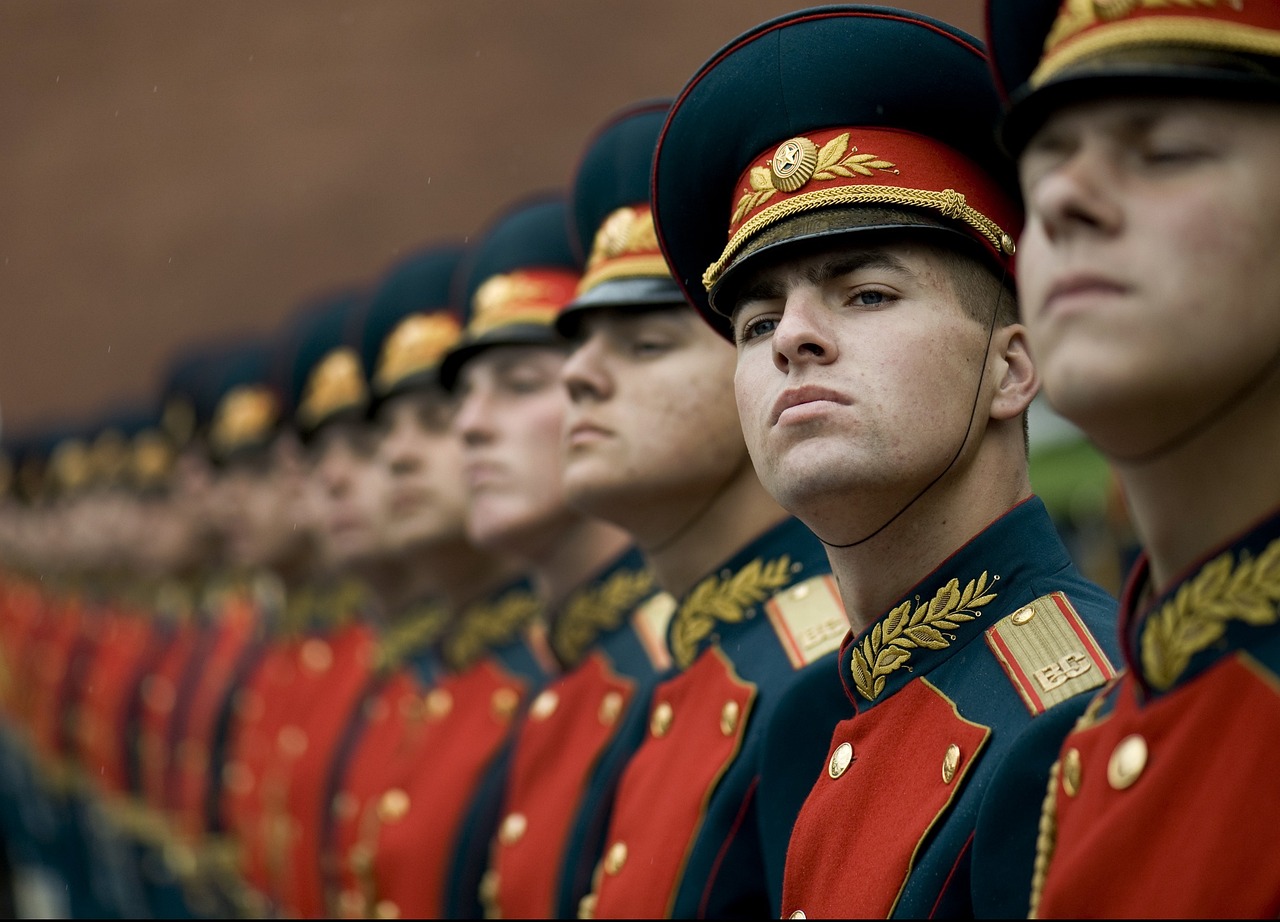
AI in Training and Simulation
Artificial Intelligence (AI) is not just a buzzword in the tech world; it’s a game-changer for military training and simulation. Imagine a scenario where soldiers can train in a hyper-realistic environment that mimics the chaos of actual combat. This is exactly what AI-driven simulations provide. By leveraging vast amounts of data and advanced algorithms, military organizations can create training programs that adapt to the individual needs of each soldier, ensuring that they are prepared for any situation they might encounter on the battlefield.
One of the most exciting developments in this arena is the use of virtual reality (VR). AI-enhanced VR training offers an immersive experience that can replicate battlefield conditions with astounding accuracy. Soldiers can engage in tactical scenarios that feel incredibly real, allowing them to practice their skills without the risks associated with live training exercises. This not only boosts their confidence but also enhances their decision-making skills under pressure. The ability to simulate various terrains, weather conditions, and enemy tactics means that soldiers can train for a multitude of scenarios, making them more versatile and effective in real-world situations.
Moreover, the concept of adaptive learning systems is revolutionizing how military training is conducted. These systems utilize AI to analyze a soldier's performance in real-time and adjust the training content accordingly. For instance, if a soldier struggles with a particular skill, the system can provide additional resources and exercises focused on that area. This personalized approach ensures that every soldier receives the training they need to excel, rather than a one-size-fits-all program. This not only improves individual performance but also enhances the overall effectiveness of military units.
To illustrate the impact of AI in training and simulation, consider the following table that highlights key benefits:
| Benefit | Description |
|---|---|
| Realism | AI-driven simulations create highly realistic training environments, preparing soldiers for actual combat scenarios. |
| Personalization | Adaptive learning systems tailor training programs to individual soldier needs, enhancing skill development. |
| Cost-Effectiveness | Reduced need for live training exercises saves resources and minimizes risks associated with traditional training. |
| Immediate Feedback | AI systems provide real-time feedback on performance, allowing for quick adjustments and improvements. |
As we look to the future, it’s clear that AI will continue to play a pivotal role in military training. The combination of immersive experiences and personalized learning will produce soldiers who are not only better prepared but also more adaptable to the unpredictable nature of modern warfare. This evolution in training methodologies is essential as military forces strive to maintain their edge in an ever-changing global landscape.
- How does AI improve military training? AI enhances military training by creating realistic simulations and personalized learning experiences that adapt to individual soldier needs.
- What is virtual reality training in the military? Virtual reality training uses AI to immerse soldiers in simulated combat environments, allowing them to practice skills in a safe setting.
- Are adaptive learning systems effective? Yes, adaptive learning systems are effective as they provide tailored training based on real-time performance analysis, improving skill acquisition.
- What are the cost benefits of AI in training? AI reduces the need for live training exercises, saving resources and minimizing risks while providing high-quality training experiences.

Virtual Reality Training
In the rapidly evolving landscape of military training, Virtual Reality (VR) has emerged as a groundbreaking tool that transforms how soldiers prepare for combat. Imagine stepping into a hyper-realistic environment where the sights and sounds of the battlefield surround you, allowing for an unparalleled training experience. With VR, military personnel can engage in combat scenarios that replicate real-life situations without the inherent risks associated with traditional training methods. This immersive technology not only enhances the learning experience but also significantly boosts the effectiveness of training programs.
One of the most compelling aspects of VR training is its ability to simulate a wide range of scenarios. From urban warfare to high-stakes hostage rescue missions, soldiers can practice their skills in various environments. This adaptability ensures that they are well-prepared for any situation they might encounter on the battlefield. Furthermore, VR training can be tailored to individual needs, allowing for personalized instruction that addresses specific weaknesses or areas for improvement.
Moreover, VR training offers a unique opportunity for team-building and coordination. Soldiers can engage in joint exercises with their peers, honing their communication and collaboration skills in a controlled setting. These sessions can be recorded and analyzed, providing invaluable feedback that helps teams refine their tactics and strategies. As a result, VR training not only prepares soldiers for combat but also fosters a strong sense of camaraderie and trust among team members.
To illustrate the effectiveness of VR training, consider the following table that compares traditional training methods with VR training:
| Aspect | Traditional Training | Virtual Reality Training |
|---|---|---|
| Risk Level | High | Low |
| Realism | Moderate | High |
| Cost | Variable | Potentially Lower |
| Adaptability | Limited | Highly Adaptable |
| Feedback | Post-Training | Real-Time |
As the military continues to embrace technological advancements, the integration of VR into training programs is likely to expand. The potential for cost savings and improved outcomes makes it an attractive option for defense organizations worldwide. In an era where preparation is crucial, VR training stands out as a vital tool in equipping soldiers with the skills they need to succeed in modern warfare.
- What is Virtual Reality training?
Virtual Reality training uses immersive technology to simulate real-life combat scenarios for military personnel, enhancing their skills and preparedness without the risks associated with traditional training. - How does VR training improve soldier performance?
VR training allows for personalized instruction, realistic simulations, and team-building exercises, all of which contribute to enhanced decision-making and operational effectiveness. - Is VR training cost-effective?
While initial setup costs may be high, VR training can lead to significant long-term savings by reducing the need for expensive physical training environments and minimizing the risk of injuries. - Can VR training be customized?
Yes, VR training programs can be tailored to meet the specific needs of individual soldiers or units, allowing for targeted skill development and practice in various combat scenarios.
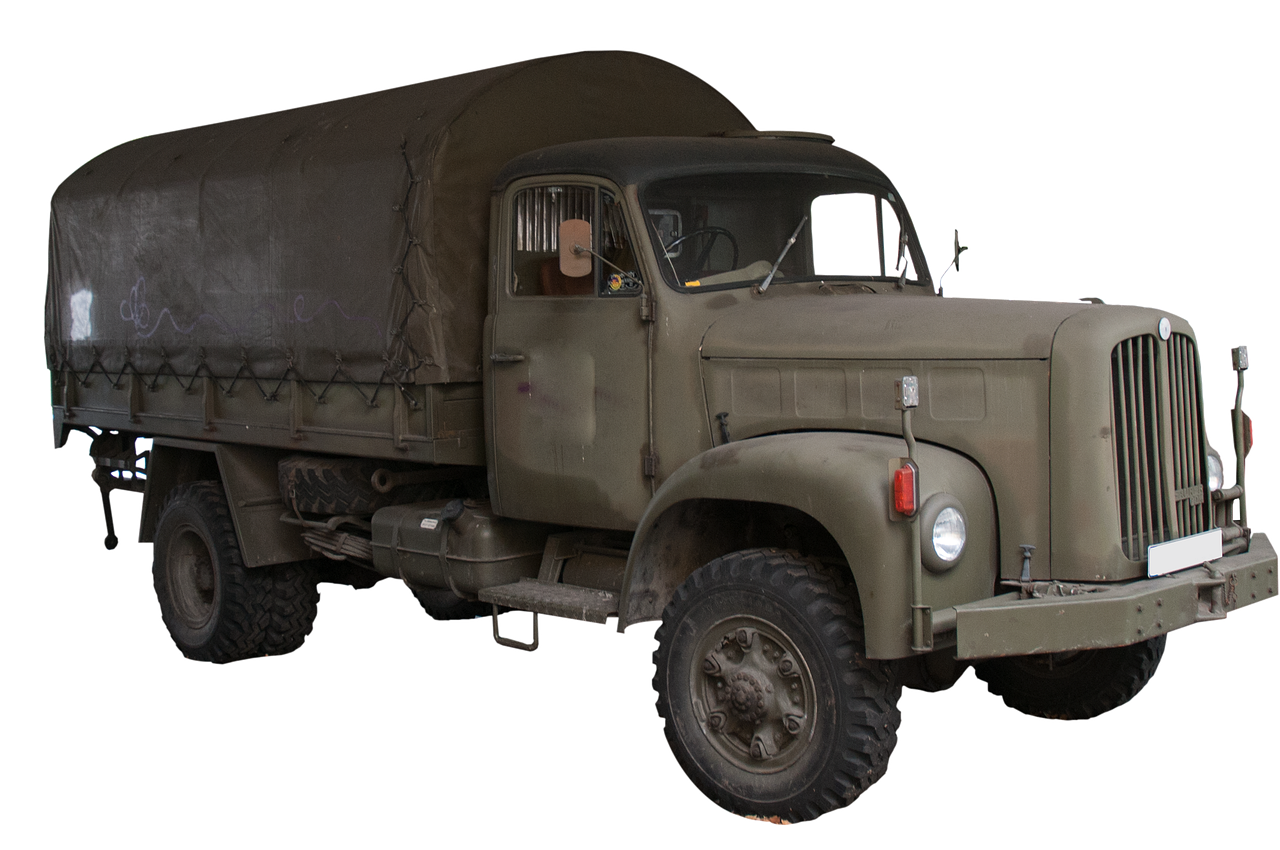
Adaptive Learning Systems
In the ever-evolving landscape of military training, are emerging as a game-changer. Imagine a training environment where each soldier receives personalized instruction tailored to their unique strengths and weaknesses. This is precisely what adaptive learning systems offer. By leveraging the power of artificial intelligence, these systems analyze a soldier's performance in real-time and adjust the training modules accordingly. This not only enhances individual skill sets but also fosters a more effective and efficient learning process.
Consider the traditional one-size-fits-all approach to military training. It often leaves some soldiers underprepared while others may find the training too easy, leading to boredom. With adaptive learning systems, the focus shifts to a more dynamic approach. For instance, if a soldier excels in tactical decision-making but struggles with physical endurance, the system can prioritize physical training while maintaining tactical exercises to ensure a well-rounded skill set. This tailored approach is akin to having a personal trainer who knows exactly what you need to improve.
Furthermore, adaptive learning systems utilize data-driven insights to identify trends and patterns in training outcomes. By analyzing vast amounts of data, these systems can predict which training methods yield the best results for specific individuals or groups. This predictive capability allows military trainers to refine their programs continuously, ensuring that soldiers are always engaged and challenged at the right level. As a result, the military can cultivate a more competent force that is better prepared for the complexities of modern warfare.
To illustrate the effectiveness of adaptive learning systems, consider the following table that outlines key benefits:
| Benefit | Description |
|---|---|
| Personalization | Training programs are customized based on individual performance metrics. |
| Efficiency | Time and resources are optimized by focusing on areas needing improvement. |
| Engagement | Soldiers remain motivated as training is tailored to their specific needs. |
| Data-Driven Insights | Continuous improvement of training methods based on performance analytics. |
As we look to the future, the integration of adaptive learning systems in military training is not just a trend; it is a necessity. The complexities of modern warfare demand that soldiers are not only well-trained but also adaptable to changing circumstances. With the help of AI-driven systems, the military can ensure that its personnel are equipped with the skills and knowledge necessary to excel on the battlefield.
- What are adaptive learning systems?
Adaptive learning systems are AI-driven training programs that personalize learning experiences based on individual performance and needs. - How do these systems improve military training?
They enhance training by tailoring content to each soldier's strengths and weaknesses, ensuring more effective skill development. - Are adaptive learning systems used in other fields?
Yes, they are increasingly used in education and corporate training to optimize learning outcomes. - What technologies support adaptive learning systems?
Technologies such as machine learning algorithms and data analytics are key components that enable these systems to function effectively.

Ethical Considerations in AI Warfare
The rise of artificial intelligence in military applications is not just a technological advancement; it brings forth a plethora of ethical dilemmas that we must confront. As we integrate AI into warfare, we are faced with the profound question of accountability. Who is responsible when an autonomous system makes a decision that leads to unintended consequences? This dilemma is akin to asking who is at fault when a self-driving car gets into an accident. The implications are vast and require us to rethink our frameworks of responsibility.
One of the most pressing issues is the debate surrounding autonomous weapons. These systems can operate without human intervention, making life-and-death decisions in high-stakes environments. Imagine a scenario where a drone identifies a target and engages it without waiting for human approval. While this might improve operational efficiency, it raises serious moral questions. Are we comfortable allowing machines to make such critical choices? The potential for errors or misjudgments could lead to catastrophic outcomes, making the need for strict regulations and ethical guidelines more urgent than ever.
Moreover, the lack of human oversight in such decisions can create a dangerous precedent. If a machine is responsible for a strike that results in civilian casualties, how do we assign blame? Is it the programmer, the military personnel who deployed it, or the machine itself? This ambiguity in accountability necessitates the establishment of clear frameworks to address these issues, ensuring that there is a mechanism for responsibility and liability in warfare.
In addition to accountability, we must also consider the implications of AI decision-making in combat scenarios. With AI systems capable of analyzing vast amounts of data and making split-second decisions, the potential for rapid escalation of conflict increases. This speed can be advantageous in some situations, but it also means that the chance for human error or misinterpretation of data is heightened. The ethical ramifications of allowing machines to dictate the pace and nature of warfare cannot be understated.
To better understand these complexities, let’s take a look at some key ethical considerations in AI warfare:
| Consideration | Description |
|---|---|
| Accountability | Determining who is responsible for decisions made by AI systems in combat. |
| Autonomy | The implications of allowing machines to make life-and-death decisions. |
| Escalation | The risk of rapid conflict escalation due to AI decision-making. |
| Bias | Ensuring that AI systems do not perpetuate existing biases in military operations. |
As we forge ahead into this new era of warfare, it is imperative that military leaders, policymakers, and technologists engage in open discussions about these ethical dilemmas. We need to establish comprehensive guidelines that not only govern the use of AI in military settings but also safeguard against its potential misuse. The future of warfare should not only be about technological superiority but also about maintaining our ethical standards and humanity in the face of advancing technology.
- What are autonomous weapons? Autonomous weapons are systems that can operate and make decisions without human intervention.
- How does AI impact accountability in warfare? AI complicates accountability by making it difficult to determine who is responsible for decisions made by autonomous systems.
- What ethical guidelines are needed for AI in military applications? Guidelines should focus on accountability, oversight, and the prevention of bias in AI systems.
- Can AI reduce civilian casualties in warfare? If implemented responsibly, AI has the potential to improve targeting accuracy and reduce collateral damage.

Autonomous Weapons Debate
The debate surrounding autonomous weapons has sparked intense discussions among ethicists, military leaders, and technologists alike. As we stand on the brink of a new era in warfare, the implications of machines making life-and-death decisions raise profound ethical questions. Are we ready to relinquish such critical responsibilities to algorithms and artificial intelligence? This is not just a matter of technological capability; it’s a question of morality and accountability.
One of the primary concerns is the potential for these systems to operate without human oversight. Imagine a battlefield where decisions are made in milliseconds, faster than a human can react. While this could lead to increased efficiency and reduced casualties on the side of the operators, it also creates a chilling scenario where machines might misinterpret situations or make errors in judgment. The consequences could be catastrophic, leading to unintended engagements or collateral damage. Therefore, the need for stringent regulations and ethical guidelines in the development of autonomous weapons becomes paramount.
Moreover, the discussion often revolves around the moral implications of delegating such power to machines. Can a robot truly understand the value of human life? Can it weigh the consequences of its actions in the same way a human would? Critics argue that allowing machines to make these decisions strips away the human element, reducing complex moral dilemmas to mere calculations. This brings us to the question of accountability: who is responsible when an autonomous weapon makes a grave mistake? Is it the programmer, the military commander, or the machine itself?
To navigate these complex issues, a framework for accountability is essential. The military and governments must establish clear guidelines that delineate the responsibilities associated with autonomous weapons. This involves not only legal accountability but also ethical considerations that reflect societal values. As we advance into this uncharted territory, it is crucial to engage in open dialogues that include various stakeholders—military personnel, ethicists, and the public—to ensure that our approach to autonomous weapons aligns with our moral compass.
In summary, the is not merely a technical discussion; it encompasses deep ethical dilemmas that challenge our perceptions of warfare and humanity. As we continue to develop these technologies, we must tread carefully, ensuring that we do not lose sight of the values that make us human. The future of warfare may be shaped by AI, but it is our responsibility to ensure that this future is guided by ethical principles and human oversight.
- What are autonomous weapons? Autonomous weapons are military systems that can select and engage targets without human intervention.
- What are the ethical concerns surrounding autonomous weapons? The primary concerns include accountability for decisions made by machines, the potential for unintended consequences, and the moral implications of machines making life-and-death choices.
- Who is responsible if an autonomous weapon causes harm? Determining accountability is complex and may involve multiple parties, including the developers, military commanders, and potentially the operators of the system.
- Are there regulations in place for autonomous weapons? As of now, there is a growing call for regulations and ethical guidelines, but comprehensive international laws are still in development.

Accountability in AI Decisions
As artificial intelligence (AI) becomes increasingly integrated into military operations, the question of accountability in AI decisions takes center stage. When a machine makes a decision that leads to significant consequences, who is responsible? This dilemma is not just a theoretical concern; it has real-world implications that could affect lives, international relations, and the ethical framework of warfare itself. The complexity of AI systems often obscures the decision-making processes, making it challenging to pinpoint accountability.
In traditional military operations, accountability is relatively straightforward. Commanders are responsible for the decisions made by their units, and there are established protocols for addressing failures or misconduct. However, with AI systems, especially those that operate autonomously, the lines of responsibility become blurred. For instance, if an AI-driven drone mistakenly targets civilian infrastructure, is the fault with the machine, the programmer, or the military leadership that deployed it? This ambiguity raises pressing ethical questions.
To address these challenges, a clear framework must be established that delineates responsibility in AI decision-making. Here are some key considerations:
- Transparency: AI systems should be designed to provide clear explanations for their decisions. Understanding the rationale behind an AI's choice is crucial for assessing accountability.
- Human Oversight: While AI can assist in decision-making, human oversight should remain a critical component, especially in life-and-death scenarios. This ensures that ethical considerations are factored into the decision-making process.
- Regulatory Frameworks: Governments and military organizations must develop regulations that govern the use of AI in warfare, outlining the responsibilities of developers, operators, and commanders.
Moreover, the international community needs to engage in discussions about the ethical implications of AI in warfare. Just as treaties have been established for nuclear weapons and chemical warfare, similar agreements may be necessary for autonomous weapons systems. The goal would be to create a consensus on acceptable uses of AI in combat and to establish accountability mechanisms that can be universally applied.
As we look to the future, the integration of AI into military operations will undoubtedly continue to evolve. However, without a robust framework for accountability, the risks associated with AI decisions may outweigh the benefits. Therefore, it is imperative that military leaders, policymakers, and technologists collaborate to ensure that AI enhances operational effectiveness while upholding ethical standards and accountability.
- What is AI accountability in military operations?
AI accountability refers to the responsibility for decisions made by artificial intelligence systems in military contexts, particularly when those decisions have significant consequences. - Who is responsible if an AI system makes a mistake?
The responsibility can fall on various parties, including the military leadership, the developers of the AI, and the operators using the technology, depending on the circumstances. - How can we ensure AI decisions are transparent?
By designing AI systems that provide clear explanations for their decisions and maintaining human oversight, we can enhance transparency in AI decision-making. - What role does international law play in AI accountability?
International law can help establish regulations and guidelines for the use of AI in warfare, promoting accountability and ethical standards across nations.

Future Trends in AI Warfare
As we gaze into the crystal ball of military technology, it's clear that the future of warfare will be heavily influenced by artificial intelligence. The evolution of AI will not only redefine battlefield tactics but also reshape the very essence of military operations. Imagine a world where collaborative AI systems work seamlessly alongside human operators, enhancing decision-making processes and operational effectiveness in complex combat environments. This collaboration is not just a futuristic dream; it's an imminent reality that military strategists are preparing for.
One of the most exciting trends is the emergence of collaborative AI systems. These systems are designed to augment human capabilities, providing real-time data analysis and suggestions based on vast amounts of information. Picture a scenario where a commander on the ground has access to a sophisticated AI system that can analyze enemy movements, predict potential threats, and recommend tactical responses. This synergy between human intuition and AI's analytical prowess could significantly enhance operational success rates.
Moreover, the integration of AI with cyber warfare strategies is set to transform how military forces defend their infrastructure. As cyber threats become increasingly sophisticated, the need for proactive measures is paramount. AI can help identify vulnerabilities in systems and predict potential cyber-attacks before they happen. This proactive approach is akin to having a digital shield that not only protects but also anticipates enemy moves, allowing for timely countermeasures.
As we venture further into the realm of AI warfare, the potential for autonomous systems will continue to grow. These systems, capable of making decisions based on pre-set criteria, can operate in environments that are too dangerous for human soldiers. However, this brings forth a crucial question: how much autonomy should we grant to machines? The balance between efficiency and ethical considerations will be a pivotal aspect of future military strategies.
To illustrate the potential impact of these trends, consider the following table that outlines key future trends in AI warfare:
| Trend | Description |
|---|---|
| Collaborative AI Systems | AI systems working alongside human operators to enhance decision-making. |
| Cyber Warfare Integration | Using AI to predict and counteract cyber threats. |
| Autonomous Systems | Machines capable of making battlefield decisions independently. |
| Predictive Analytics | Utilizing AI to anticipate enemy movements and strategize accordingly. |
In conclusion, the future of AI in warfare is not just about technological advancement; it's about rethinking our approach to conflict. As military leaders embrace these innovations, they must also grapple with the ethical implications and ensure that the deployment of such technologies aligns with our values. The battlefield of tomorrow will require a delicate balance between human judgment and machine efficiency, ultimately shaping a new era of warfare.
- What are collaborative AI systems? Collaborative AI systems are advanced technologies that work alongside human operators to enhance decision-making and operational effectiveness in military contexts.
- How does AI improve cyber warfare strategies? AI enhances cyber warfare by predicting potential threats, identifying system vulnerabilities, and enabling proactive defense measures.
- What ethical concerns are associated with autonomous systems? The main ethical concerns include accountability for decisions made by machines and the implications of allowing machines to make life-and-death choices without human oversight.
- Will AI replace human soldiers in the future? While AI will play a significant role in warfare, it is unlikely to completely replace human soldiers. Instead, it will augment their capabilities and improve operational efficiency.

Collaborative AI Systems
The future of warfare is not just about machines operating in isolation; it's about collaboration between human operators and artificial intelligence systems. Imagine a battlefield where AI doesn't replace soldiers but rather enhances their capabilities, allowing for a more efficient and effective response to threats. This is the essence of . These systems are designed to work alongside military personnel, leveraging the strengths of both human intuition and machine precision.
One of the most exciting aspects of collaborative AI is its ability to process vast amounts of data in real-time. For instance, during a military operation, AI can analyze incoming intelligence, assess potential threats, and provide recommendations to commanders almost instantaneously. This real-time analysis allows military leaders to make informed decisions faster than ever before, which can be crucial in high-stakes situations where every second counts.
Moreover, collaborative AI systems can serve as a force multiplier. By integrating AI into command and control systems, military forces can enhance their operational effectiveness. For example, AI can help prioritize targets based on threat level, logistics, and mission objectives, ensuring that human operators focus their efforts on the most critical tasks. This not only improves efficiency but also reduces the cognitive load on soldiers, allowing them to concentrate on strategic thinking rather than getting bogged down in data analysis.
As we delve deeper into the concept of collaborative AI, it's essential to highlight its potential applications:
- Enhanced Decision-Making: AI can provide data-driven insights that assist commanders in making strategic decisions.
- Real-Time Threat Assessment: By continuously analyzing the battlefield, AI can identify emerging threats and recommend actions.
- Resource Allocation: AI can optimize the deployment of troops and equipment based on real-time conditions and mission requirements.
The integration of collaborative AI systems also raises important questions about the human-machine relationship. How do we ensure that human operators remain in control of critical decisions while still benefiting from AI's capabilities? This balance is crucial to maintaining ethical standards in warfare. Training programs will likely evolve to emphasize not only the technical skills required to work with AI but also the ethical considerations that come with its use.
Looking forward, the development of collaborative AI systems will undoubtedly shape the future of military operations. As technology continues to advance, we can expect these systems to become more sophisticated, capable of learning from past experiences and adapting to new situations. This evolution will empower soldiers, enabling them to operate more effectively in complex environments where quick thinking and adaptability are paramount.
- What are collaborative AI systems?
Collaborative AI systems are designed to work alongside human operators, enhancing decision-making and operational effectiveness in military contexts. - How do collaborative AI systems improve military operations?
They provide real-time data analysis, prioritize threats, and assist in resource allocation, allowing for faster and more informed decision-making. - What ethical considerations are associated with collaborative AI?
Ensuring human control over critical decisions and addressing accountability for AI-driven actions are key ethical concerns in military applications.

Integration with Cyber Warfare
The integration of artificial intelligence (AI) with cyber warfare represents a groundbreaking shift in how military forces approach both offense and defense in the digital realm. In today's interconnected world, where the lines between physical and cyber battles are increasingly blurred, AI serves as a powerful ally for military strategists. Imagine a battlefield where not only troops and tanks but also lines of code and digital networks play a crucial role in determining victory. This is the new reality that AI is helping to create.
One of the most significant advantages of AI in cyber warfare is its ability to process and analyze vast amounts of data at lightning speed. Traditional cybersecurity measures often rely on human analysts who can become overwhelmed by the sheer volume of information. In contrast, AI systems can sift through terabytes of data, identifying patterns and anomalies that may indicate a cyber threat. This capability enables military forces to respond to potential attacks more swiftly and effectively than ever before.
Moreover, AI can enhance the effectiveness of offensive cyber operations. By employing algorithms that can learn and adapt, military cyber units can develop sophisticated attack strategies that target enemy infrastructure with pinpoint accuracy. For instance, AI can simulate various attack scenarios, allowing strategists to choose the most effective approach while minimizing collateral damage. This level of precision is crucial in modern warfare, where the stakes are incredibly high, and the consequences of miscalculation can be catastrophic.
However, this integration is not without its challenges. As military forces increasingly rely on AI, they must also contend with the ethical implications of its use in cyber warfare. Questions arise about accountability: if an AI system makes a decision that leads to unintended harm, who is responsible? Furthermore, the potential for AI to be weaponized raises concerns about an arms race in autonomous cyber capabilities. As nations strive to outpace one another in developing advanced AI technologies, the risk of miscommunication and escalation increases.
To navigate these complexities, military leaders must establish clear guidelines and frameworks for the use of AI in cyber operations. This includes developing protocols for accountability and oversight, ensuring that human operators remain in the decision-making loop, particularly in scenarios where lives are at stake. The goal should be to harness the power of AI while maintaining ethical standards and accountability in military operations.
As we look to the future, the integration of AI with cyber warfare will undoubtedly evolve. We may soon see the emergence of collaborative AI systems that work alongside human operators, enhancing decision-making processes in real-time. These systems could analyze incoming data feeds, assess threats, and suggest countermeasures, all while allowing human operators to maintain ultimate control. This synergy between man and machine could redefine military strategy in the digital age.
In summary, the integration of AI with cyber warfare is not just a technological advancement; it represents a paradigm shift in military operations. By embracing AI, military forces can enhance their capabilities, improve response times, and develop strategies that were previously unimaginable. However, with great power comes great responsibility. It is essential to balance innovation with ethical considerations to ensure that the future of warfare remains just and accountable.
- What role does AI play in modern cyber warfare?
AI enhances data analysis, threat detection, and the execution of cyber operations, allowing for faster and more effective responses to cyber threats. - Are there ethical concerns surrounding AI in warfare?
Yes, the use of AI raises questions about accountability, decision-making, and the potential for autonomous systems to operate without human oversight. - How can military forces ensure responsible AI use?
Establishing clear guidelines, maintaining human oversight, and developing accountability frameworks are essential for responsible AI integration in military operations.
Frequently Asked Questions
- How does AI enhance strategic planning in military operations?
AI enhances strategic planning by analyzing massive data sets, allowing military leaders to make informed decisions quickly and accurately. This capability leads to more effective operational outcomes, as it helps identify patterns and potential threats that may not be immediately visible to human analysts.
- What role does AI play in surveillance and reconnaissance?
AI significantly improves surveillance capabilities by enabling real-time data analysis and threat detection. This enhancement boosts reconnaissance missions and situational awareness on the battlefield, allowing military forces to respond more effectively to emerging threats.
- How are drones being transformed by AI technology?
The integration of AI in drone technology has revolutionized aerial reconnaissance. Autonomous drones equipped with AI can conduct missions without human intervention, providing faster responses to threats and improving intelligence gathering while minimizing risks to human operators.
- What are predictive analytics, and how do they impact warfare?
Predictive analytics powered by AI assists military strategists in anticipating enemy movements. This capability enables proactive measures that can shift the balance of power in conflict scenarios, allowing for more strategic and informed decisions on the battlefield.
- How is AI used in military training and simulation?
Military training programs increasingly utilize AI-driven simulations to create realistic combat scenarios. These simulations help soldiers prepare for various situations while improving their decision-making skills under pressure, making training more effective and relevant.
- What ethical concerns arise from the use of AI in warfare?
The rise of AI in military applications raises significant ethical questions regarding accountability and decision-making. The debate surrounding autonomous weapons highlights the moral implications of machines making life-and-death decisions, emphasizing the need for regulations and ethical guidelines in AI development.
- What does the future hold for AI in military operations?
Looking ahead, the evolution of AI technology will shape future battlefield tactics. We may see collaborative AI systems working alongside human operators, enhancing decision-making processes and operational effectiveness in complex combat environments, as well as integration with cyber warfare strategies.





